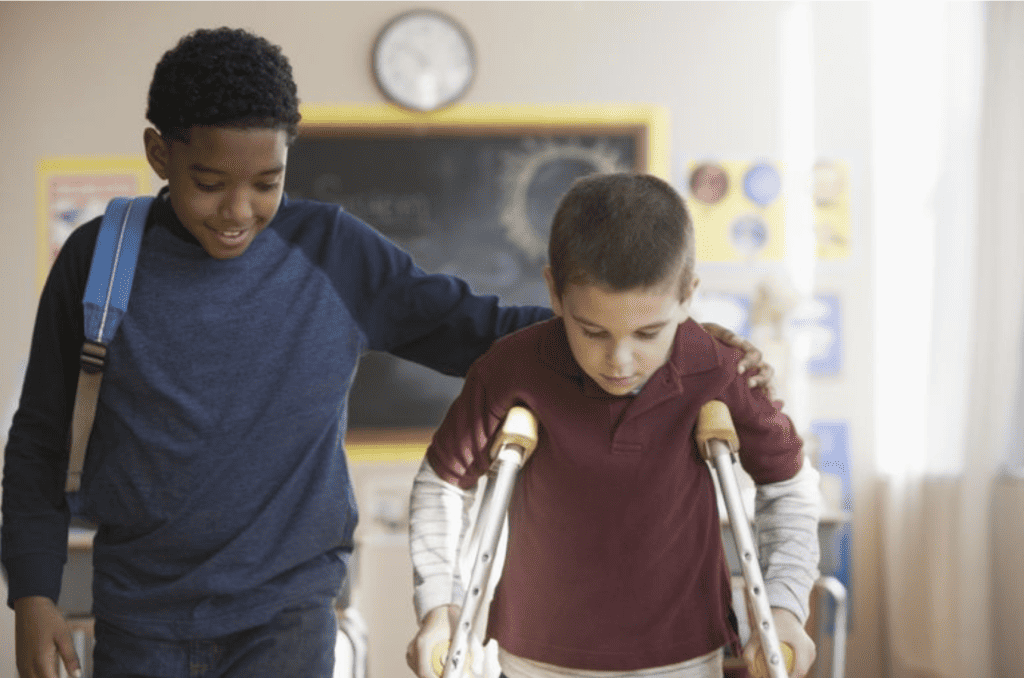How to Encourage Kindness Among Your Students
Author: Kathy McInnis
You can make this dream come true
Imagine a class filled with happy, healthy, and attentive students — the impossible dream, right? You can make this dream come true. Encouraging kindness among your students develops and nurtures positive qualities that change lives.

Studies by mental health organizations find that kindness boosts happiness and well-being. 1,2 One such study reveals that it increases energy, self-worth, and optimism.3 Performing acts of kindness also decreases anxiety, depression, and blood pressure.4
Another study reveals that kindness is contagious.5 Envision the “kindness contagion” spreading through your classroom, your school, and into your community. The positive impact is limitless. The following are five suggestions for inspiring this attitude among your students:
Model kindness yourself. Set a goal of performing at least three acts of kindness each day. Kindness can be as simple as opening a door for the person behind you or as challenging as assisting a colleague overloaded with projects. There are days when showing kindness may be exhausting. Try it anyway. With daily practice, kindness becomes a lifestyle and you will influence more individuals than just your pupils.6
Be kind to yourself. When stressed or overwhelmed, take a walk, soak in the tub, or sit quietly listening to music. Another beneficial activity is starting a gratitude journal. You clear your mind of negativity when you spend time recording why you’re thankful. Be especially kind to yourself when you make mistakes. You’re human; don’t beat yourself up.
Read aloud a story of kindness. After reading, allow students to share what they learned. Ask them to share times when someone was kind to them or when they have shown kindness to others. Some students may see this activity as a way to impress you and their peers. Remind your class that kindness is not a competition. They should expect nothing in return — the greatest reward is spreading happiness to others.
Implement lesson plans or activities that inspire kindness. A lesson on being kind can be as simple as a math problem — Kelly has five apples, Alice has zero apples. Kelly notices that Alice is hungry, so he gives her two apples. How many apples does Kelly have now? When reviewing the answer, note that Kelly performed an act of kindness. Additional lesson plans and activities are offered online.
Schedule a Kindness Day. This special day will allow students to have hands-on experience. Prior to the scheduled event, allow your class to print names of individuals who need help clearing yard debris. After picking a name, obtain the necessary permission from your supervisors and the individual. Clearing yard debris is more suited for older students, but younger children can make cards or artwork to share with senior citizens at local community centers. Allow students to share their own ideas on activities for Kindness Day. Their creativity may surprise you.
Planting seeds of kindness and nurturing that virtue among your pupils will help them become happy, healthy, and attentive. You’ll have a part in influencing future adults who change the world for the better. For more information on inspiring kindness and other values, check out Simple Ways to Blend Moral Values in Your Teaching.
About the Author

Kathy McInnis writes inspirational nonfiction. Kathy’s first book, “Companions on My Journey”, is the true story of an abuse survivor. Her essay “The Perfect Day” won third place in the 2021 Florida Tapestry Awards. When she’s not writing, Kathy enjoys hiking, sitting on the beach, or reading a good mystery. Kathy and her husband have three grown children and three grandchildren.

